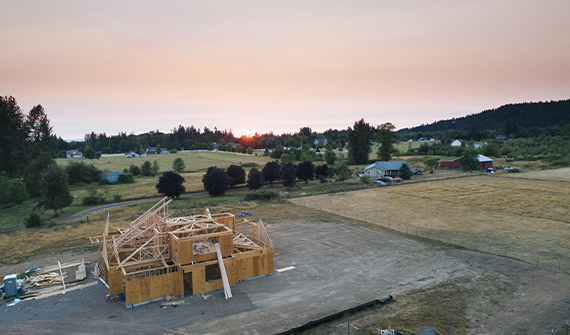Construction Loans

How Our Construction Loan Works:
- Initial Funding: Funds are disbursed in stages to cover construction costs, ensuring your project stays on track.
- Interest-Only Payments: During the 12-month construction period, make interest-only payments to keep costs manageable.
- More Flexibility: After completing the construction loan phase, choose the best loan terms for the permanent loan.
Enjoy a smooth construction process by gathering your paperwork before you dig.
Begin your application by clicking Apply Now below. Here are the documents we’ll need next:
- Income & Assets
- Year-to-date paystub
- Two years Federal tax returns
- Two months’ bank statements
- Evidence of lot purchase, if applicable
- Insurance agent’s name and agency contact information
- Builder Contract
- Contract from builder listing completion date, total dollar amount, change request policy, etc.
- Copy of builder’s license
- Construction Cost Breakdown
- Line-by-line explanation of costs
- Plans and specifications for the home to be constructed
- Room-by-room specifications on material choices

Ready to Get Started?
Contact our Real Estate Lending team today to learn more and get pre-qualified for your construction loan.
Beehive offers mortgage loans, even in areas where flood insurance is required. The National Flood Insurance Program (NFIP) is a federal program that provides flood insurance, manages floodplains, and develops flood hazard zones. Federal law mandates flood insurance for members borrowing funds in high-risk areas.
Can you remove the flood insurance requirement? Members can hire a qualified surveyor to perform an elevation certificate for their home. This certificate, along with an application, can be submitted to FEMA for a Letter of Map Amendment (LOMA). A LOMA is an official amendment to an NFIP map, establishing whether a property is in the Special Flood Hazard Area (SFHA). LOMAs are typically issued when a property was mistakenly identified as being in a floodplain but is actually on natural high ground above the base flood elevation. Once issued, the LOMA becomes part of the public record and must be maintained by the community.
